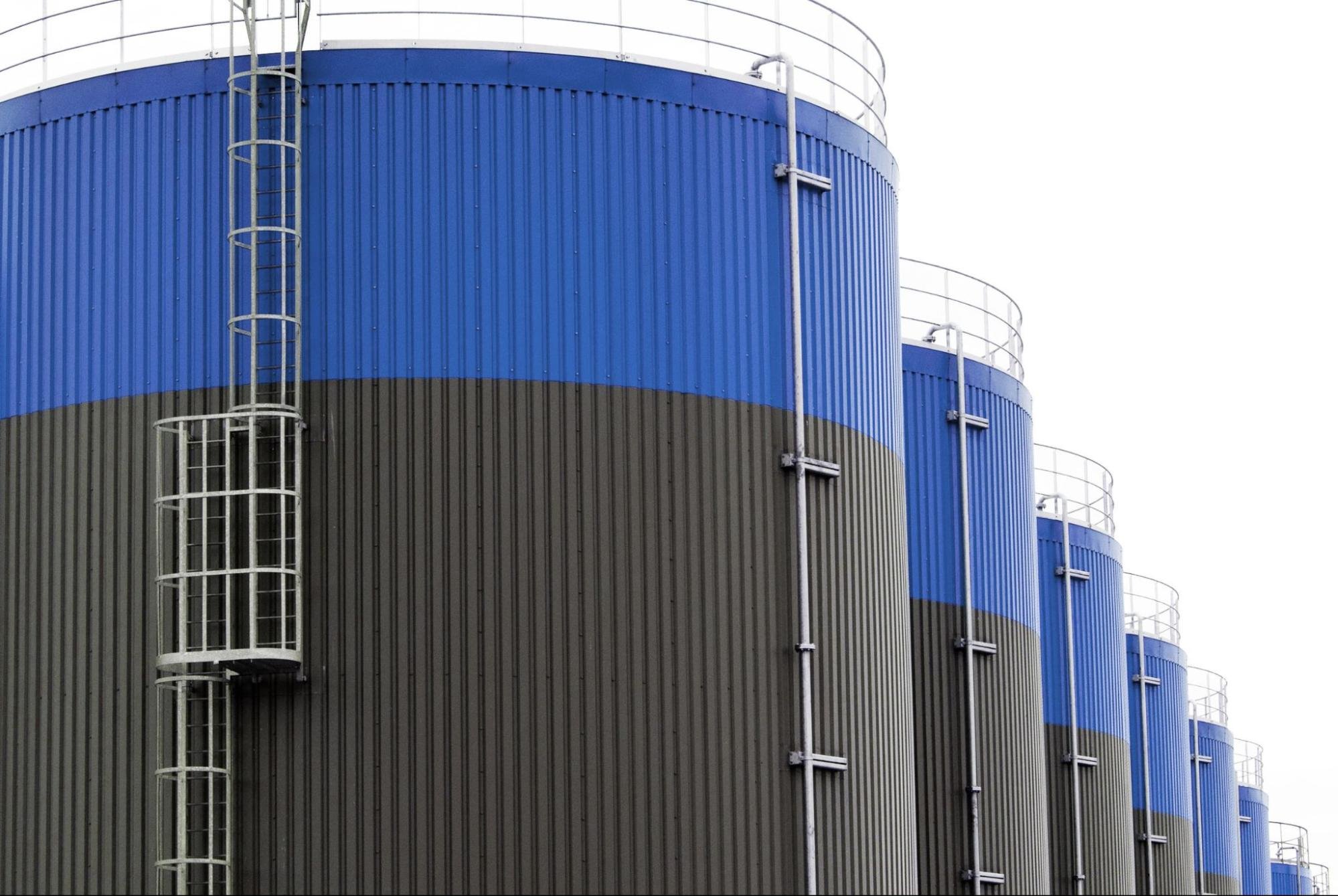In today’s world, oil is used on a daily basis. From heating our homes to running our vehicles and cooking our food—various types of oils are required to get the job done. In order to supply oil to the world, holding tanks are used for bulk storage. Holding tanks must maintain proper conditions in order to keep the oil safe and in optimal condition. Insulation is one component that keeps oil tanks operational.
Here, we discuss how to properly insulate commercial oil tanks to achieve optimal storage.
What Are Commercial Oil Tanks?
Commercial oil tanks are large silos used to store bulk amounts of oil safely and effectively. They are designed to store various types of oil including crude, fuel, lubricating, vegetable, synthetic oils and more. Industrial oil tanks can be above-ground or below-ground and they are used in the following industries:
Transportation
Manufacturing
Chemical Production
Power Plants
Mining
Why Insulate Oil Tanks?
Oil tank insulation helps maintain constant temperatures while also protecting the structures from weather, UV radiation, and other elements that can affect the container’s content quality. Outside oil tank insulation plays a crucial role in these systems to store oil properly.
Temperature Regulation
Some oils need to maintain a specific temperature range for safety reasons and most begin to degrade once the material falls outside of the recommended temperature range. Here are some common safe storage temperature ranges for various oil types:
Crude Oil: 40 - 100 degrees Fahrenheit
Motor Oil: 32 - 122 degrees Fahrenheit
Heating Oil: 32 - 100 degrees Fahrenheit
Industrial oil tanks require their own temperature regulation systems—which require building insulation. By adding outside oil tank insulation, you can reduce your heating and cooling needs and lower your energy costs.
Tank Longevity
Oil tank insulation can be used to protect the structure itself and increase its service life expectancy. The outside insulation creates a barrier between the oil tank walls and the elements, including high winds, hail, solar radiation, rust, and freeze/thaw cycles. Investing in exterior protection up front saves oil tank owners in the long run since their tanks can operate for a longer period of time.
How to Insulate a Commercial Oil Tank
When it comes to insulating an outdoor oil tank, there are many ways to proceed. Some oil tank owners may choose a foam spray, or create a double-wall structure where the cavity can be insulated with flexible insulating materials. These two methods present problems of their own, including:
Foam spray can deteriorate with weather exposure and may only be a temporary solution.
Double-wall oil tank structures can be very expensive without a huge improvement in performance.
Another method involves foam-core insulation panels laminated to an aluminum sheet. This type of insulation material can be installed in one of two ways. Both methods utilize foam insulation laminated to an aluminum sheet.
Vertical Panels: Vertical panels can be manufactured in flat panels which stretch vertically from the bottom to the top of the tank.
Horizontal Panels: Horizontal panels can be manufactured with a curved profile that allows for horizontal installation that matches the curvature of the oil tank.
The foam-core insulated metal panels require a professional installation, but depending on your application—the initial investment may be worth it to protect your assets.
Steps to Insulate an Oil Tank
The process of insulating an oil tank is similar regardless of the material that you choose. Below, we have outlined the steps to insulate an outdoor oil tank:
Research options and R-value requirements for your tank type
Choose a material and method
Measure your oil tank to create a material list (or hire a contractor)
Prepare the substrate if applying a spray-type insulation
Install subgirts and straps as needed for attachment
Install insulation panels with adhesive or screws
Apply weather barrier if outside face of insulation is not weatherproof
Why Choose Polyiso for Oil Tank Storage?
Of all the options available for insulating an oil tank, polyiso foam board insulation is a superior choice due to its natural properties that outperform other products. Some of the reasons to choose polyiso include:
High R-Value per Inch: R6.0 per inch
Versatile Facer Choices: Meets solar reflectance or vapor barrier requirements
Easy Installation: Lightweight and easy-to-cut rigid polyiso doesn’t require special equipment or expertise
Readily Available: Polyiso is used in commercial construction and is readily available
Options for Insulating An Oil Tank
Rmax has several industrial insulation products that can be used for oil storage tanks, including Rmax Thermasheath®, TSX-8510, and EVOMAXci®. Our industrial laminate panels include the Thermasheath® polyiso insulation to insulate outdoor oil tanks and other industrial structures.
Get Help Picking the Right Material with Rmax
You specialize in oil storage, and Rmax specializes in insulation. Let’s work together to find a custom insulation solution that works to meet your oil storage needs. Reach out to our experts today to talk to one of our experts about your project!




